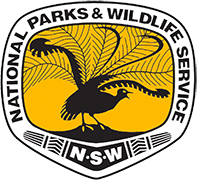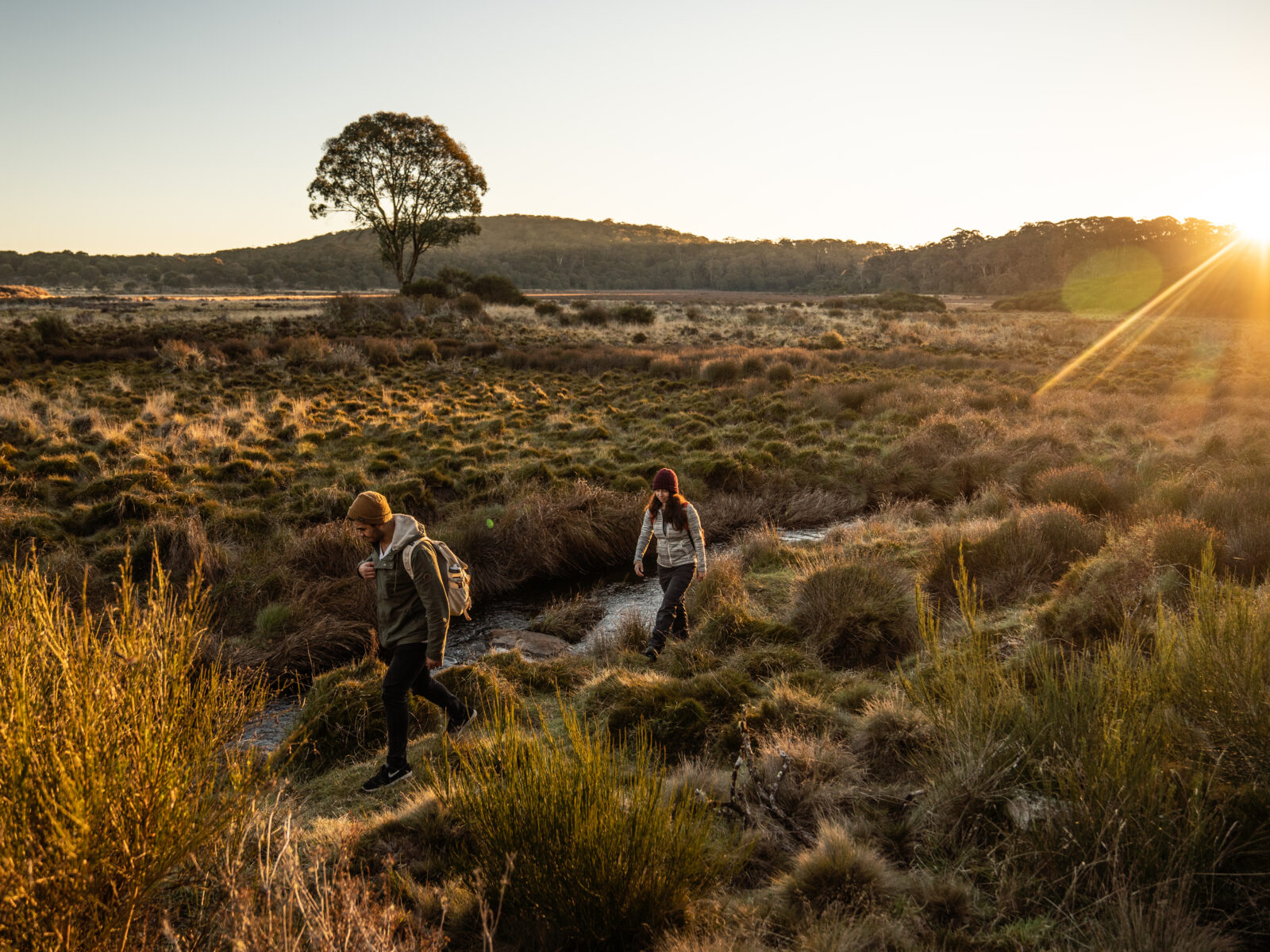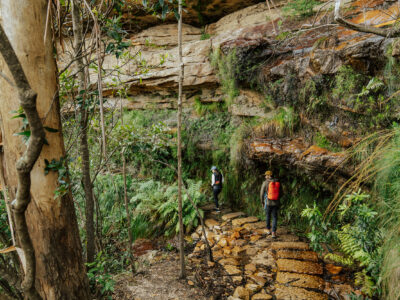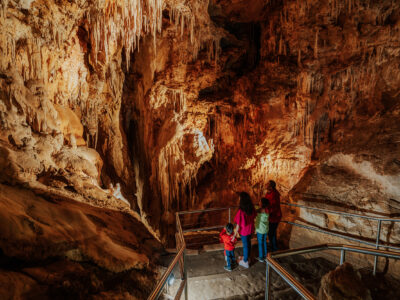What does the word “winter” bring to mind? Fireplaces? Renewed Netflix subscriptions? Hot chocolates? Well snap out of it! That’s some Northern Hemisphere thinking. In Australia, hikers don’t hibernate. In fact, winter in New South Wales is a pretty mild affair. While you’ll definitely need a few more layers (stash them in your bag on a day hike, just in case!), there are a bunch of reasons why winter is the best time to hit up a national park for some hiking:
-
1/6
It Rains Less
View this post on InstagramI think we selectively remember all the hot, dry summer days and forget that it’s always flippin’ raining. In Australia the least rain falls between late April and September, so your best shot at avoiding “precip” (cool hiker slang for rain) is getting out there in the cooler months.
Of course, it can rain anytime so a strong seam-sealed and breathable waterproof jacket is an essential bit of kit. Trust me, getting drenched in the Blue Mountains National Park on a nine degree day is a special kind of cold.
DownloadNSW National Parks appDownload your next adventure -
2/6
Creepy Crawlies Take The Winter Off
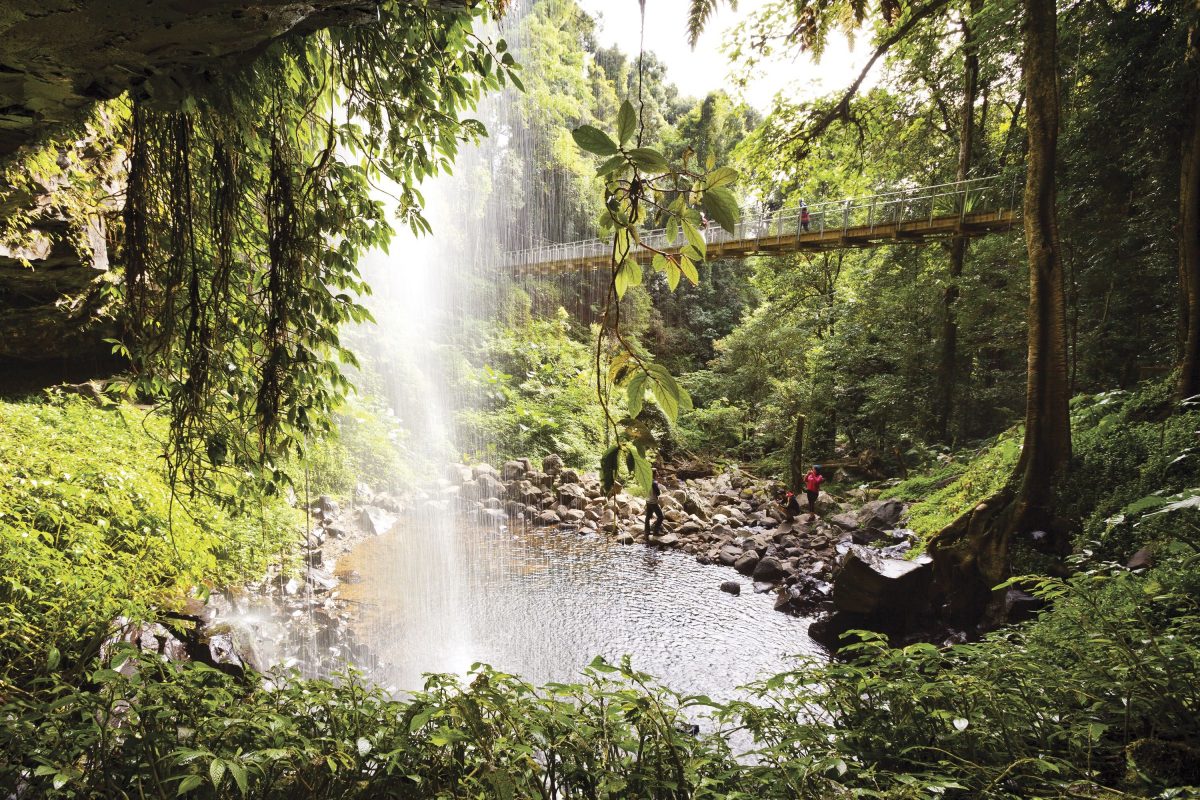 Photo Information
Photo InformationCrystal Shower Falls
Dorrigo National Park
Rob Cleary, Seen Australia/DPIE
Leeches, mosquitos, flies and ticks, did I get them all? Oh yeah, spiders. These guys are absolute sooks, so there’s a reduced chance of bumping into them in the cold and dry winter weather.
Winter is the perfect time to check out some typically leechy hikes. The Ruined Castle walking track (Blue Mountains National Park) is tough enough without freeloaders trying to suck out your red stuff. And you’ll enjoy Crystal Shower Falls (in Dorrigo National Park) a lot more without tiny-vampire-paranoia.
Reach the summit without swatting yourself in the face, spend exactly zero minutes chasing mosquitoes from your tent and save yourself the embarrassment of the spider web dance – hit the trail in winter instead.
Read our tips: on what to do if you come across the four most common creepy crawlies in the bush.
DownloadNSW National Parks appDownload your next adventure -
3/6
You’ll Get Less Sweaty
Hiking is sticky at the best of times, so why make it harder for yourself? Even if your shirt has more technology than the Mars Rover, there’s no substitute for cooler weather and lower humidity when you’re trying to avoid the “persp” (not cool hiker slang for perspiration – please don’t say this).
An all-day adventure hiking the Grand High Tops walk (Warrumbungle National Park) is sure to be that much sweeter if you’re not sweating up a storm. Being comfortable, you’ll be free to focus on experiencing the incredible rock formations and turning your Insta game up to 11.
DownloadNSW National Parks appDownload your next adventure -
4/6
Hiking Warms your Bones
There’s something special about setting out on a shiveringly crisp dark morning for a solid walk; that feeling of warmth generated from deep within your bones, passing through the soul and out of every pore of your body. That feeling of ‘snugness’ continues to those that choose to camp!Everyone loves cracking out the doona when winter hits, there’s something immensely satisfying about fighting off the cold with a sleeping bag and your own body heat. The Germans even have a special word for it: geborgenheit. I’m not even sure how to use it in a sentence, but be my guest.
Anyway, my point is, sleeping bags are a 360 degree doona. With zips, pockets and a hood they’re basically an evolution of their 2D predecessor. There’s no better time than winter to jump right in and fill yourself with that sweet, sweet geborgenheit feeling. Oh hey, I did it.
Try our newest multi-day walk: hike the Murramarang South Coast Walk
-
5/6
Misty Mornings In The Mountains
Winter in the mountains is a mystical occasion – outcrops and cliffs float lazily above the low-hanging clouds – it’s like Lord of the Rings minus the orcs. This, of course, is best witnessed on a hike. To begin your quest, head to Kanangra-Boyd lookout (Kanangra-Boyd National Park) for awe-inspiring vistas that are easy on the walk in. For the more experienced, head to Newnes Plateau Cliffs (Gardens of Stone National Park) or summit Pigeon House Mountain (Morton National Park) for a mind-blowing lesson in Australian landscape and vapour aesthetics.
DownloadNSW National Parks appDownload your next adventure -
6/6
There’s Lower Bushfire Risk
Bushfire risk in New South Wales is at its lowest in winter. No surprises really, it’s cold and everything takes a bit longer to dry. It is, however, always important to check current warnings before you go bush.
Also: campfires. Fireside chills are only good if the fire is warding off the real chills of a frosty night in nature. Just check that fires are permitted in your campground. In winter, it’s also less likely there’ll be a Total Fire Ban, but check this as well, you don’t want to be that person endangering the bush and everyone in it.
Ranger’s Tip: Whenever you have a campfire, be sure to fully extinguish it afterward.
Equipped with these nuggets of wintery wisdom, it’s now time to roll out the maps and start planning your winter walk before it starts warming up too much!
